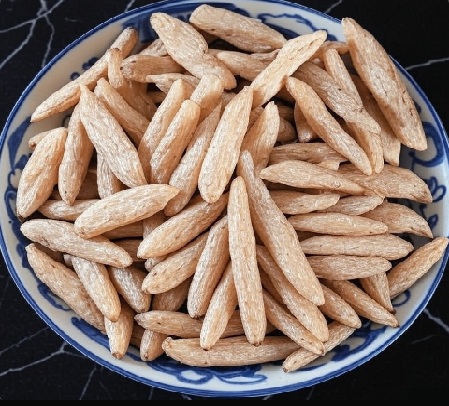Ophiopogon Root (Mai Men Dong): A Moistening Herb for Yin, Lungs, and Heart
Introduction
Ophiopogon root, known as Mai Men Dong (麦门冬) in Traditional Chinese Medicine (TCM), is a gentle yet deeply nourishing herb treasured for its ability to moisten dryness, nourish yin, and calm irritability. With a sweet, slightly bitter flavor and cool nature, it is commonly used to soothe dry coughs, nourish the Stomach and Lung yin, and promote restful sleep through Heart yin support. This versatile root is a go-to herb for restoring fluids and easing internal dryness caused by heat, illness, or yin deficiency.
What Is Ophiopogon Root?
Mai Men Dong is the tuberous root of Ophiopogon japonicus, a grass-like plant native to East Asia. In TCM, it is classified as sweet, slightly bitter, and cool in nature. It enters the Heart, Lung, and Stomach meridians. Traditionally, it is used to nourish yin and generate fluids, moisten the lungs, clear heat from the Heart, and relieve irritability or insomnia. Its yin-restorative qualities make it particularly beneficial during recovery from febrile illnesses, or for those with chronic dryness.
Health Benefits of Ophiopogon Root
Nourishes Lung Yin and Relieves Dry Cough
Mai Men Dong moistens dryness and clears heat in the lungs, helping to relieve dry, hacking coughs, hoarseness, and sore throat.
Generates Fluids and Moistens the Stomach
It is used to treat dry mouth, thirst, or stomach discomfort due to yin deficiency or lingering heat.
Clears Heart Heat and Calms the Spirit
Ophiopogon root cools and nourishes Heart yin, helping reduce irritability, restlessness, and insomnia caused by yin deficiency heat.
Supports Skin Hydration and Inner Moisture
By enriching yin and fluids, it can help with skin dryness and overall hydration at a systemic level.
Replenishes Yin After Illness or Heat Conditions
It is excellent for restoring yin after fever, heatstroke, or prolonged dryness, often used in tonics or post-illness formulas.
How to Use Ophiopogon Root
In Soups and Herbal Decoctions
Simmer 6–12 grams with herbs like Sheng Di Huang, Bai He, or licorice root for 30–45 minutes to extract its cooling and moistening essence.
In Herbal Teas or Tonic Broths
It can be brewed on its own or blended with herbs such as lily bulb, chrysanthemum, or American ginseng to soothe the lungs and calm the mind.
As a Functional Ingredient
Mai Men Dong can be added to yin-nourishing desserts like snow fungus soup or pear-based tonics. Look for soft, plump, translucent slices for best quality.
Where to Buy Ophiopogon Root
You can find Mai Men Dong at the following places:
-
Chinese herbal medicine shops
-
Herbal apothecaries or Asian grocery stores
-
Online retailers such as Amazon, iHerb, or TCM specialty websites
Look for:
-
Plump, creamy-white to translucent root slices
-
Organic or sulfur-free varieties
-
Lab-tested products to ensure purity and safety
Are There Any Side Effects?
Ophiopogon root is very safe for most people when used appropriately. However, those with dampness or phlegm conditions (e.g., loose stools, digestive sluggishness) should use it cautiously, as it can be too cloying in such cases. Always consult a practitioner when combining with strong tonics or for long-term use.
Conclusion
Ophiopogon root, or Mai Men Dong, is a cooling, moistening yin tonic used in TCM to soothe dry coughs, nourish internal fluids, and calm the spirit. Whether brewed in teas, added to soups, or included in classic yin-restoring formulas, this gentle root provides replenishment and calm for those depleted by dryness, stress, or illness.
FAQs
Can I use Ophiopogon root every day?
Yes, in small to moderate amounts and typically as part of a balanced yin-tonifying formula or tea.
What does Ophiopogon root taste like?
It has a mild, sweet, slightly earthy flavor with a cool, moistening mouthfeel.
Is Ophiopogon root safe for children?
Yes, under the guidance of a pediatric herbalist, especially for dry cough or fever recovery.


